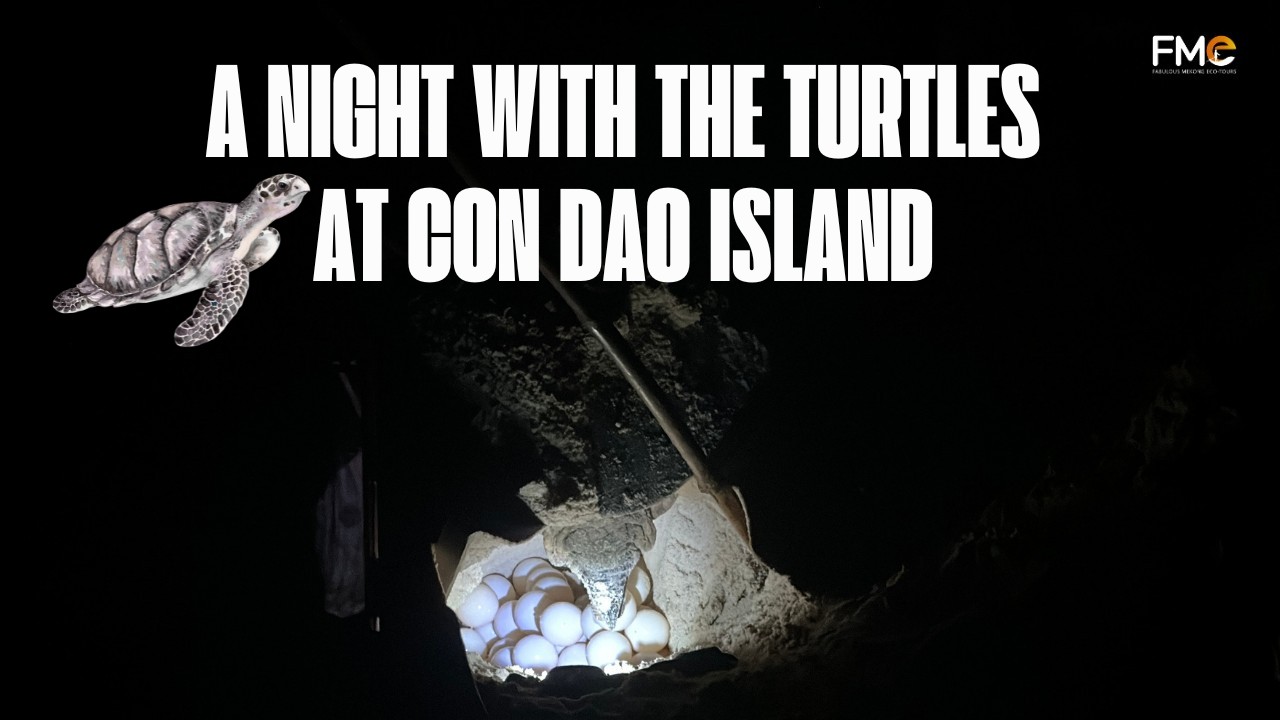
Some stories begin in silence — and stay with you long after the waves have faded.
At Con Dao Island, where the land ends and the ocean begins again, there’s a beach where time slows down. It was here, one quiet night in June, that a group of travelers — led by a local guide and two rangers — witnessed something unforgettable.
From the Town to the Reef
The journey began at 36 Ton Duc Thang Street, in the heart of Con Son town. From there, a cano took them across the turquoise waters toward Hon Bay Canh — one of the park’s most biodiverse islands.
“It always feels like crossing into another world,” said Binh, a guide who’s led over a dozen trips here. “Once the engine cuts off, it’s just wind, water, and the sound of your own breath.”
At a reef near the island, they stopped to snorkel. Beneath the surface: corals blooming in shades of orange and violet, schools of fish weaving between shafts of light.
“The reef was quieter this time,” one guest noted. “Beautiful, but… you could feel something fragile in it.”
Hon Bay Canh — A Place of Quiet Work
The cano docked at Hon Bay Canh, the largest island in the park after Con Son. There are no roads here, no buildings beyond the wooden ranger station nestled in the mangroves.
The group followed a narrow trail through dense forest, passing signs of tidal change and crab burrows in the mud. The air smelled like salt and leaves.
At the station, ranger Hau shared stories of nesting seasons past:
“Some turtles return to the exact spot they were born, twenty years ago. No one teaches them. They just know.”
Guests listened in silence. For most, this was their first glimpse into real conservation work — delicate, patient, and mostly invisible.
A Meal by Moonlight
As evening fell, the rangers prepared dinner — a simple spread of rice, stir-fried morning glory, and freshly grilled grouper caught by hand the day before.
The travelers ate under a sky bright with stars. No Wi-Fi, no lights. Just the sound of leaves and the slow lapping of water on shore.
“It’s the kind of quiet that doesn’t feel empty,” one guest said. “It feels full of something you’ve missed.”
The Forest That Comes Alive at Night
After dinner, they began the night walk — a soft trek into the mangroves under torchlight.
That’s when the tank crabs appeared. Small, armored creatures with curved shells, they shuffled sideways in the underbrush, their movements barely audible.
“They only come out when it’s really dark,” Binh whispered. “Some of them live their whole lives without being seen.”
The Moment They Waited For
Past midnight, the beach fell silent. The tide was low. The sand, cool.
And then — movement.
A dark shape emerged from the water: a green sea turtle, nearly a meter long, pulling herself slowly across the sand. Everyone froze. No one dared speak.
She dug. She laid. She buried. The entire process took over an hour. And not once did she look toward the humans watching nearby — as if they were never part of the story.
After covering the nest, she paused — then turned, and disappeared back into the sea.
“It felt like watching the earth breathe,” one woman said. “And for once, we were quiet enough to feel it.”
What They Brought Back
When the cano returned the next morning, no one spoke much. The sun was up, the town awake. But something remained from the night before.
Maybe it was the hush of the nesting. Maybe it was the rangers’ quiet care.
Maybe it was the knowledge that this still exists — not far away, but close enough to protect, if we choose to.
If You Ever Find Yourself There
Don’t go for the photos. Don’t expect comfort.
Go because you want to witness something older than memory.
Because you need to slow down.
Because somewhere between the mangroves and the moonlit beach, you might remember something about yourself too.
